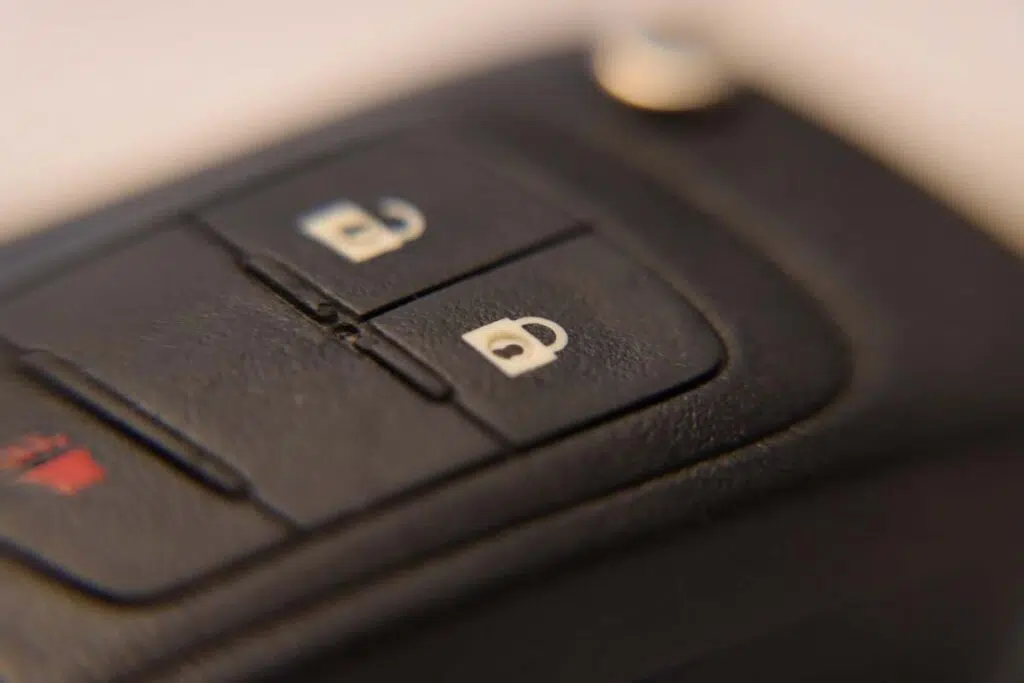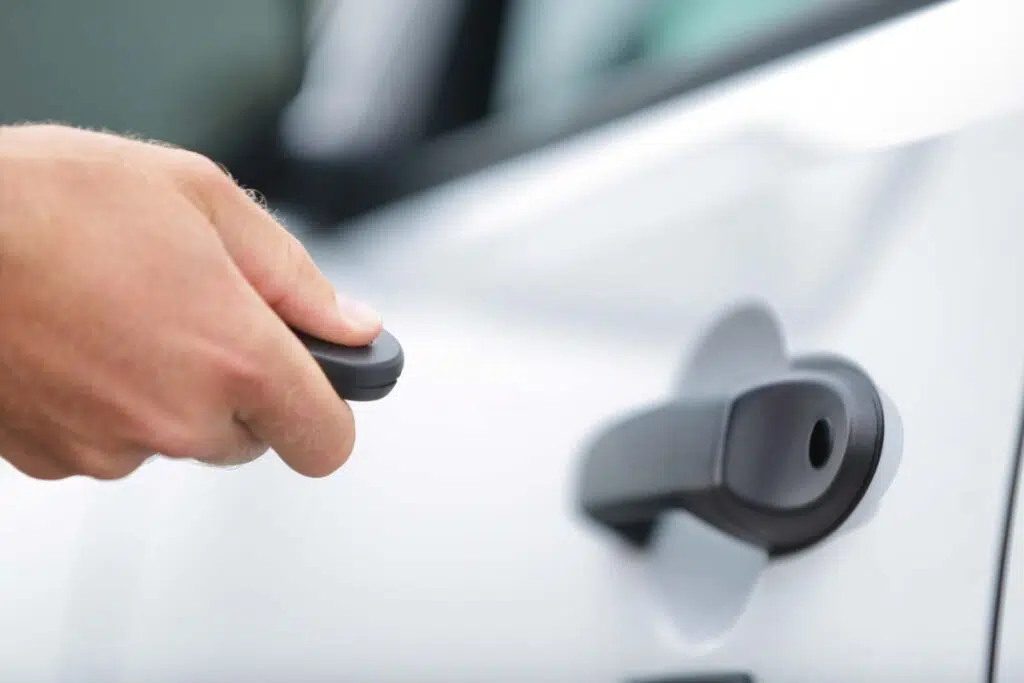The Jeep key fob is part of your vehicle’s keyless entry system. Unlike in the olden days when manually locking and unlocking car doors was required, recent-year Jeep models with key fobs do this for you electronically. Hence, it would be beneficial to familiarize yourself with this innovative feature and to know when it is time for a battery replacement. This guide will surely help you achieve these objectives.
Here are seven steps on how to change the battery in a Jeep key fob:
- Pop the Jeep key fob open with a screwdriver.
- Apply pressure on the screwdriver as you pry it open.
- Remove the Jeep key fob battery from its housing.
- Insert the replacement battery.
- Reassemble the key fob components.
- Snap the key fob housings together.
- Reprogram your Jeep key fob (optional).
If left unaddressed, a key fob with a poorly working battery will hinder your ability to lock and unlock your car doors remotely. Worse, it can trigger your car alarm or cause a no-start issue for your vehicle. Both are situations no one would ever want to be in, which makes knowing how to replace the battery in a Jeep key fob all the more significant.

How to Change Jeep Key Fob Battery
Generally, Jeep key fob batteries last between three to four years. But depending on how frequently it is used, the battery could die out much sooner. If you need to press the keypad repeatedly to lock your car doors or your key fob no longer works within 45 feet of your vehicle, it is high time for a battery replacement.
Depending on the model, year, and trim of your Jeep, it may come with one of the following key fobs:
| Jeep Models | Key Fob / Battery | Years |
|---|---|---|
| Gladiator, Wrangler | Corner Cut, 3V CR2450 | 2018 – Present |
| Compass, Renegade | Rounded, 3V CR2032 | 2014 – Present |
| Grand Cherokee, Cherokee, Commander | Teardrop, 3V CR2032 | 2008 – Present |
| Liberty, Commander, Patriot, Wrangler | Fixed Key, 3V CR2032 | 2005 – Present |
| Grand Cherokee | Pear-shaped, 3V CR2016 | 1999 – 2004 |
Except for the shape and some features, there is little to no difference between these key fob designs. That said, the steps required to change their battery are pretty similar. In this section, however, we will cover steps applicable to a fixed-key Jeep key fob (while also highlighting important information relevant to other Jeep models with keyless entry systems):
1. Pop the Jeep Key Fob Open With a Screwdriver.
Since it is made of plastic that snaps together, you will need a flathead screwdriver to open your key fob and access the battery. To do this, insert the screwdriver tip into the key fob’s seam (the part near the key ring). Some Jeep owners prefer to use a pry bar tool.
For some Jeep models like the Jeep Renegade, it is necessary to remove the pull-out metal ignition key first before popping the key fob open. Do this by locating the metal switch on the key fob and sliding it over to release the metal ignition backup. Once pulled out, set the metal ignition key aside in a safe place.
2. Apply Pressure on the Screwdriver as You Pry It Open.
Depending on how delicately you can do this step, you can use the screwdriver tip on its own or with the help of soft material to reduce the risk of damaging the plastic. Position the screwdriver tip at the seam of your Jeep key fob. And with just the right amount of force, pry it open (never twist) – but be careful not to damage the key fob’s plastic parts. Otherwise, you will not be able to put it back together later.
3. Remove the Jeep Key Fob Battery From Its Housing.
As you disassemble the key fob, you will see that it consists of five parts, as follows:
- The first half of the housing that has holes for the keypad and the key attached to it
- The keypad
- The circuit board
- The battery
- The second half of the housing that holds the battery in place
Before you remove the battery from its place, I recommend making a mental note of the polarity of the old battery – so that you are not lost when you put in the replacement. Additionally, pay attention to the circuit board. If its tiny components are loose or falling out, make necessary adjustments to put it back in its original position.
Lastly, take care not to scratch or bend the metal electrical contacts if using a screwdriver to pry out the old battery.
4. Insert the Replacement Battery.
Typically, the negative side of the key fob battery is facing down, and the positive side is facing up. However, this may not be the case for all key fobs. For this reason, I advised earlier to take note of the polarity of the old battery – that mental picture will serve as your foolproof guide on how to position the new battery.
On the bright side, some Jeep key fobs have labels printed into the battery socket providing instructions on how the battery should be fitted.
5. Reassemble the Key Fob Components.
After replacing the battery, you will need to reassemble the other pieces of the key fob. Start with placing the keypad into the housing where it fits, then the circuit board into the keypad. You should be all set once done with these steps. When reassembling, it is easiest to do the following. Place the half with the battery on the half with the keypad and circuit board, according to Quadratec.
6. Snap the Key Fob Housings Together.
At this stage, the two halves of your key fob should be assembled. Now all you have to do is snap them gently but snugly together, beginning near the key ring and working towards the other end of the casings. Ensure the key fob housings are flush together at every edge – this is especially important for key fobs with a pull-out metal ignition backup. Otherwise, the latter will not fit in the key fob when you replace it.
7. Reprogram Your Jeep Key Fob (Optional).
Usually, a change of battery is the only thing necessitated in resolving issues with a non-working Jeep key fob. However, there may be instances when this is not enough – meaning you will need to reprogram your key fob to make it functional again. If you find yourself in this situation, then follow the below steps:
- Have your Jeep key fob programmer handy. You can get this from an authorized parts center or the Mopar® online store.
- Next, insert your key into the ignition and turn the ignition to the first position. Make sure to do this without starting the engine.
- Place the key fob programmer into your vehicle’s OBD/DLC port, which you can find under the steering column (driver side).
- Synchronously press your Jeep key fob’s lock and unlock buttons for three seconds, then the unlock button for two seconds.
- Turn your ignition off, then remove the Jeep key fob programmer.
- Wait for two minutes before testing your key fob. By that time, it should already work.
How to Tell if a Key Fob Battery Is Low

Alongside knowing how to replace a key fob battery, you should also be able to spot early signs when it is dying. Here are some of the things to be on the lookout for:
Indicator Light Displaying Green Flashes
Whenever you turn off your engine, pay attention to the indicator lights and see if it does this. If yes, then it is an indication of reduced signal strength and a weak battery.
Multiple Button Presses
One of the apparent benefits of having a Jeep key fob is the ease of opening and closing your car doors. So if you find it difficult to do this simple procedure, then maybe it is time to take a trip to the nearby hardware for a pack of 3V CR2032 coin cell batteries.
Decreased Range
Most vehicle key fobs (not only exclusively Jeep’s) have an operating range of 50 feet. Immediately replace the battery if your key fob does not function at this distance.
Inconsistent Operation
Yes, we can sometimes fall into the trap of blaming ourselves (and our tired fingers) when this happens. But believe me when I tell you t is a fading key fob battery causing these inconsistencies. Make sure to replace your key fob battery at once, lest you end up with expensive reprogramming expenses.
Frequently Asked Questions

What Is the Price to Replace a Jeep Key Fob?
Buying replacement batteries and doing the procedures outlined in this guide in a timely manner will cost you less than $40. Doing the same thing, but after letting your key fob battery die out completely, may entail key fob reprogramming and expenses of up to $600. The worst possible case is having to replace the entire Jeep key fob.
Thankfully, you will not always have to pay full price if you do the latter. Check your coverage materials – car insurance policy, car warranty, or automotive club membership – to see if any clause entitles you to a free or discounted OEM key fob replacement.
What Are the Recommended Brands When Replacing a Key Fob Battery?
Most Jeep owners strongly suggest Energizer or Duracell coin cell batteries, although the 3V CR2032, CR2450, and CR2016 are available from other manufacturers like Panasonic, Sony, and Maxell.
Conclusion – How to Change a Jeep Key Fob Battery
To recap, here are seven simple steps how to change the battery in your Jeep key fob:
- Pop the Jeep key fob open with a screwdriver.
- Apply pressure on the screwdriver as you pry it open.
- Remove the Jeep key fob battery from its housing.
- Insert the replacement battery.
- Reassemble the key fob components.
- Snap the key fob housings together.
- Reprogram your Jeep key fob (optional).
The information shared in this article is guaranteed to help you save some hard-earned dollars. Because you will be replacing your Jeep key fob battery on your own, you need only worry about spending approximately $20 for a good pair of CR2032 batteries. If you take the other route (outsource the task to a dealer), you might be looking at roughly $150 to $600 of repair expenses.
Whichever your decision, the most important thing is to not tarry on replacing your Jeep key fob battery. It is not just for convenience – you would not want to be in the middle of nowhere, unable to open your car doors and drive home. Of course, some Jeep models will allow you to open the car doors manually when situations like this arise. But if I were you, I would not want to risk it.
Kris is an avid off-roader and outdoor enthusiast who loves to brave the elements and take on challenging terrain. He also enjoys sharing his passion and knowledge with others so that they, too, can appreciate the ride.
About Kris
